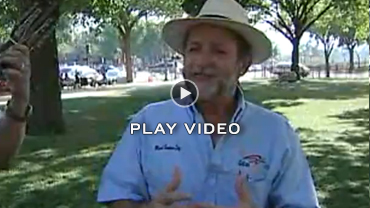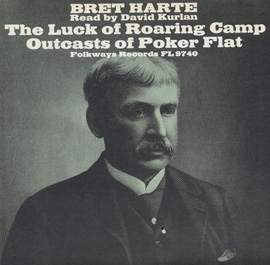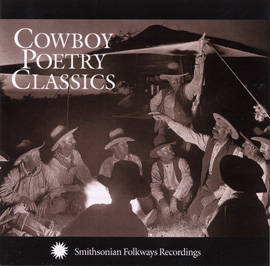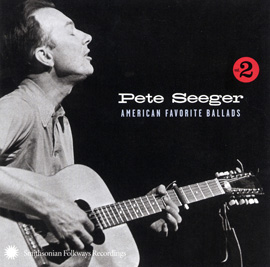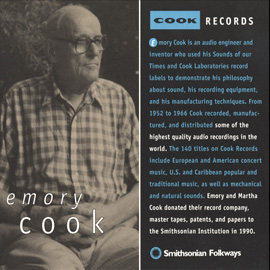Summary
This unit focuses on the jíbaro music of Puerto Rico. Students will learn to identify the characteristic instruments, rhythms, and sound of jíbaro music, as well as appreciate the improvisatory skills of the poet/singers known as trovatores. Students will listen, perform, analyze, and create original verses using a common jíbaro poetic structure (the seis). This unit will also highlight important theme of social justice, which is often the topic of jíbaro songs.
Suggested Grade Levels: 3–5 or 6–8
Country: USA (unincorporated)
Region: Puerto Rico
Culture Group: Puerto Ricans (Boricuas)
Genre: Jíbaro
Instruments: Voice, body percussion, bongos, guiros, xylophones, guitar/piano (optional addition for harmonic support for grades 3–5)
Language: Spanish
Co-Curricular Areas: Social studies, language arts
National Standards:2, 3, 4, 6, 9
Prerequisites: Basic familiarity with how to play xylophones, familiarity with instrument timbres, ability to keep a steady beat in a group music setting, some experience with reading and writing poetry (knowledge of rhyme scheme and form).
Objectives:
- Listen: Students will recognize and identify the characteristic sound of jíbaro music (6, 9)
- Play: Students will play classroom percussion instruments to reproduce the harmony and rhythms of jíbaro music (2)
- Compose: Students will compose original verses to create their very own seis (4)
- *Improvise: Students will vocally improvise a melody for their original verse in the jíbaro style (like the Puerto Rican trovatores) (3)
*This objective is for more confident and advanced musicians. Not all students will gain the skills necessary to improvise in the four lessons of this unit.
Material:
Recordings:
- Puerto Rico in Washington
- Folk Masters: Great Performances Recorded Live at the Barns of Wolf Trap
- Jíbaro Hasta el Hueso: Mountain Music of Puerto Rico by Ecos de Borinquen
Videos: (free downloads from iTunes U):
- Smithsonian Folkways > Mexico, Central & South America videos > Ecos de Borinquen demonstrate música jibara
- Smithsonian Folkways > Mexico, Central & South America videos > Ecos de Borinquen perform “Mujer Borinqueña”
Instruments:
- Xylophones, guiros, bongos
- Optional: Guitar and/or piano (for the teacher to provide harmonic support to aid less musically advanced students)
Visual Aids:
- Map of Puerto Rico (can be found by Google search)
- Photographs of Puerto Rican culture (flag, food, landscape, people, instruments; can be found by simple Google search, or display images from Smithsonian Folkways CD liner notes)
Sound/Video/Technology:
- Ability to play specified audio and video recordings (sound system and video projector)
- Video projector and computer to display musical notation and poetic analysis
Lesson Segments:
- What Is Jíbaro? (National Standards 6, 9)
- Exploring Jíbaro Song Forms (National Standards 6, 9)
- Performing Jíbaro Music (National Standard 2)
- Creating an Original Jíbaro “Seis” (National Standards 2, 3, 4)
Lesson 1: What Is Jíbaro?
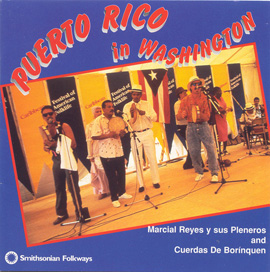
“Seis Mapeyé”
from Puerto Rico in Washington (1996) | SFW40460
- Listening: “Seis Mapeyé” (track 108 from Puerto Rico in Washington); play only first 32 seconds of piece (end of “le le lei’s”) after posing the following questions.
- Ask: What instruments do you hear? (Strings—guitar and cuatro, a ten-stringed lute used exclusively in Puerto Rican music; guiro, bongos.)
- Ask: Did you hear anything repeat? How many times? (The entire introduction repeats before the singer enters, so we hear it two times; bongo and guiro rhythm patterns are repetitive.)
- Repeat listening to the recording as necessary to check student answers.
- Ask the following questions and then listen to the first 32 seconds of “Seis Mapeyé” again.
- Ask: Is this song in a major or minor tonality? (Minor.)
- Play the song again and ask: Can you sing the tonic? (Listen to hear if students sing the correct pitch— D.)
- Play the song again and ask: Can you sing the bass line? What do you notice? (It steps down—natural minor.)
- Listen to the 32-second clip again with the following questions in mind.
- Without hearing enough of the song to determine the language, can you guess where the music comes from?” (Vocal line and syllables may sound Arabic; this is the Arabic influence that came to Puerto Rico through the Spanish. Lead students to discover it comes from Puerto Rico.)
- How do you know that? What clues did you get? (Instruments— strings/guitar, guiro, and bongos; rhythms common to Puerto Rican music; tonality and chord progressions also commonly used.)
- Provide students with cultural information:
- Ask students to find Puerto Rico on a world map. Discuss its location in the Caribbean.
- Report on its history as a Spanish colony (claimed for Spain by Christopher Columbus on his second voyage in November 1493) and now as a territory of the United States (ceded to the United States from Spain in 1898 after the Spanish-American War; Puerto Ricans became American citizens in 1917 around the time of WWI, allowing the US army more potential soldiers; current debate in Puerto Rico is whether to remain a US colony, apply for statehood, or secede and become an independent nation). Tell students that in the same way that Native Americans were in the United States before Europeans arrived, the Taíno people lived in Puerto Rico. They were briefly enslaved by Spanish settlers, but due to outbreaks of infectious diseases that killed many of them, they were officially emancipated in 1520. African slaves were then brought to Puerto Rico by the Spanish to do the work the Taíno had been forced to do. Over the years, the Spanish settlers, African slaves, and Taíno residents converged to form what is now the Boriuca people and culture. The word boriqua comes from Boriquén, the name the Taíno people used to refer to the island of Puerto Rico.
- Show photographs of Puerto Rican people, food, dress, geography (rainforest, beaches, farms, etc.). These can be found online or in the liner notes of the three Smithsonian Folkways CDs used in this lesson.
- Inform the students that the music they just heard was the music of the rural people; it was born on farms and in the mountains of the Puerto Rican countryside. Introduce the term jíbaro for the style of music.
- Due to the resurgence of cultural and racial pride in the United States during the 1960s and 1970s, jíbaro music experienced a time of growth and popularization. Fueled by a parallel movement in Puerto Rico, jíbaro music (and other Puerto Rican roots music) enjoyed a renaissance supported in large part by government programs through the Institute of Puerto Rican Culture.
- Ask: Where you can find jíbaro music today? (Everywhere! It is identified as the music of Puerto Rico that unites all the regions of the island and people of Puerto Rican descent in other parts of the world as well). For further information, see liner notes of Puerto Rico in Washington and Jíbaro Hasta el Hueso.
- Show pictures of instruments used in jíbaro (cuatro, guitar, guiro, bongos) and discuss each one. Emphasize the cuatro; it is the sound and virtuosic playing of the cuatro that differentiates jíbaro music from other Puerto Rican and Latin American musics.

Cuatro
- Ask: Can you air play the instruments? Listen for each different instrument and air play it as I point to its picture. Play same 32-second musical clip again, pointing to a different instrument every eight seconds or so.
- Ask: Can you sing/hum/vocalize each instrument’s part as I point to its picture? Play the clip and point to one instrument each time. Repeat for each instrument. More than one listening may be required for students to hear certain parts; repeat as necessary until you can discern that most students are closely approximating the part of the instrument you are pointing to. Teacher modeling may be necessary if students cannot hear the parts themselves (consult transcription in lesson 3). For the guitar part, have the students sing the root of each chord (bass line).
- Bongo and guiro parts can be transferred to body percussion. Let students creatively use their bodies to play the rhythms they hear.
- Try combining two or three instrument parts at once (point to multiple pictures at once).
- Allow students to choose which instrument they want to “play” and then all vocalize or use body percussion together with the recording.
- Optional extension: “Play” the music without the recording. Each student chooses one of the instrument parts, and they all perform their chosen parts together, singing or performing body percussion. Go back and repeat the previous step (performing with the recording) if necessary, and then try to perform without the recording again.
Assessment: Can students accurately perform parts of the song “Seis Mapeyé” by ear? Can they identify the different instrument timbres typical to jíbaro music? Can they recall contextual information about jíbaro music (where it comes from, when it became popular, who listens to it today, etc.)?
Lesson 2: Exploring Jíbaro Song Forms
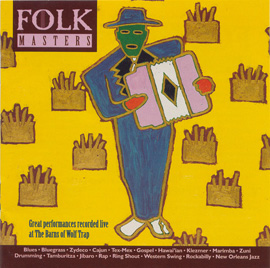
“Aguinaldo Jibaro”
from
Folk Masters: Great Performances Recorded Live at the Barns of Wolf Trap
(1993) | SFW40047
- Review from the first lesson the following:
- This music comes from Puerto Rico
- The musical genre is called jíbaro
- The ten-stringed lute that is unique to jíbaro music is called a cuatro. Although it is not a Spanish instrument, it was developed as a result of Spanish instruments (like the guitar) brought to Puerto Rico in the 1600s.
- Tell the students that today they are going to learn about two different types of jíbaro songs: the aguinaldo and the seis. Then play recording of “Aguinaldo Jíbaro” by Familia Colon, Folk Masters track 5.
- Tell students that this is an aguinaldo. It is the song form of choice for songs about the birth of Jesus, which is part of the Puerto Rican celebration of La Navidad (Christmas). Ask: Do you have songs that you sing every year to celebrate Christmas or another special holiday with your family? (Various Christmas carols, other non-religious holiday songs like “Frosty the Snowman,” etc.)
- Aguinaldos can also be about other topics, such as love or culturally specific values and traditions. These songs are fixed compositions (notes and words do not change). This is one characteristic that distinguishes the aguinaldo from the other song form we are going to study today, the seis.
- Share other information from CD liner notes as applicable to helping your students understand the aguinaldosong form.
- Introduce another type of jíbaro song: seis.
- Originally a dance for six couples, hence the name seis, meaning “six.”
- It has a ten-line poetic structure with a strict rhyming formula that is often improvised by the trovador (singer/poet). This structure and the fact that it is improvised are important factors in distinguishing the seis from the aguinaldo.
- “Seis Mapeyé” is a seis (hence the title).
- For more information on jíbaro song forms, including the seis, review the following liner notes from Jíbaro Hasta el Hueso.
- Watch video of Ecos de Borinquen: “Seis Chorreao” (downloaded from iTunesU: Smithsonian Folkways > Mexico, Central & South America videos > Ecos de Borinquen demonstrate música jibara)
- Ask: What different instruments do you see? (Guitar, cuatro, guiro, female vocalist.)
- Watch the video again and ask: Do you hear any musical phrases being repeated? (Yes.) Do you hear any Spanish words that rhyme? (Yes—see Appendix A; rhyme scheme will be addressed more in Lesson 4.)
- Tell students to raise their hands when they hear the cuatro solo (when the cuatro is playing or improvising a melody and is supported by the other instruments), and then play the video again, stopping after the cuatro solo concludes.
- Ask the following question, and then play the video again: Do you think she is singing a song someone taught her or is she making some parts up? How do you know? (She is making much of it up as she goes along; the phrases sound similar to each other but are somewhat different, limited pitch range, many repeated pitches.)
- Ask: Does this song make you feel more happy or sad? (Although there is no right answer, the students are likely to find that it sounds happy.) What features of the music make you feel this way? (Fast notes, major tonality, she’s smiling while she’s singing.) What do you think she’s singing about? (No right answer.)
- Ask the questions below one at a time, and then watch second video of Ecos de Borinquen: “Mujer Borinqueña” (downloaded from iTunesU: Smithsonian Folkways > Mexico, Central & South America videos > Ecos de Borinquen perform “Mujer Borinqueña”) after asking each question.
- Ask: The last song was in major. Is the next song in major or minor? (Minor tonality.)
- Ask: Did the use of a minor tonality make you feel differently when you listened to the song? (Some students may pick up on the sadness or even anger in the song. Injustice is a common theme in the seis song form and will be discussed more in the fourth lesson.)
- Notice that in both videos there is an instrumental break that highlights the cuatro solo (and gives the trovator an opportunity to think about the next verse he or she is going to improvise). The cuatro is the distinguishing instrument of jíbaro.
Assessment: Students should be more familiar with the characteristic sounds and history of jíbaro. Students should be able to identify seis as a type of jíbaro song.
Lesson 3: Performing Jíbaro Music
- Play the first 32 seconds of “Seis Mapeyé.” Ask: Does any of this sound familiar? (Yes—this was the song from Lesson 1.) Ask: What kind of song is this? (Seis.)
- Review singing the bass line (D, C, Bb, A).
- Play the entire first verse (through 1:40). Display the Spanish lyrics (Appendix B) and ask: Can you follow the vocal line? Do you hear any poetic phrases that repeat? (Yes—some of the words repeat: Hoy traigo un tema especial; la raza humana anda mal; si ante Dios somos iguales; el blanco y el de color)
- What do you think the singer is singing about? Does it sound happy or sad? (Variety of answers; sad.)
- Share the translation of the verse with the students, which is about racial injustice (see Appendix A).
- Point out to students that even though this is music of rural Puerto Ricans, the themes that are representative of this music are themes with which people from many different ethnicities and parts of the world can identify. Give current examples (African Americans and the civil rights movement in the United States, apartheid in South Africa, Native Americans and “Manifest Destiny,” caste system in India, Sunni and Shiite conflicts in many Middle Eastern countries). Ask students if they can identify with the singer. Have they ever seen or felt racial injustice? Allow for students to share a few responses.
- Ask students to sing/play with body percussion any parts of the song that they remember from Lesson 1 as we listen again (melody/vocal line, guiro part, bass line, chords, etc.), then play the recording through verse one (stop at 1:40). Observe to see which students are correctly performing one of the parts.

- Add guiro part; perform with recording.
- Add bongo part; perform with recording and guiro.
- Add students playing bass line* on xylophone (teacher may play on guitar); perform with recording.
- Play introduction (the introduction is the first four measures of the piece repeated—see transcription above) along with recording.
- Play introduction without recording.
* The part can also be simplified in the fourth measure by having students play the rhythm that is written but stay on the A instead of playing the moving sixteenth notes. It is helpful for the teacher to reinforce the harmony by playing the chords on the guitar or piano if students are only able to play the bass line.
Extension (optional): More advanced groups could play the entire chord on xylophones:
- Some students play the xylophone rhythm on the 3rd of each chord (ex. F in measure 1).
- Other students play the xylophone rhythm on the 5th of the chord (ex. A in measure 1).
- In measures 3 and 4, add the 7th (Ab in measure 3 and Bb in measure 4) so that the entire chord sounds instead of just the bass line.
Assessment: Can the students play the piece accurately with the recording? Can they play without the recording? Can they identify ways their performance either does or does not sound like the original performance?
Lesson 4: Creating Original “Seis” Verses
- Listen to verse one (through 1:40) of “Seis Mapeyé,” track 8 on Puerto Rico in Washington.
- Review the seis as a song form (see liner notes for CD Puerto Rico in Washington for a description of the history and common form/rhyme scheme of the seis).
- Also note the common use of improvisation in the singing of the seis, as well as the repetition and rhyming of certain lines (this is important to the form). Remind students that social justice is a common topic of the seis.
- Using the lyrics provided in Appendix C, analyze the rhyme scheme in Spanish of the first verse of “Seis Mapeyé” as a class (abbaaccddc).
- Choose a social justice topichat is of particular interest or concern to the students. If they have a difficult time grasping the concept of social justice, discuss with them things that they perceive as being unfair. Unfair things that happen to a large group of people can be an issue of social justice.
- Using the composition template in Appendix D, write the ten lines of the seis together as a class.
- Alternatively you could write two lines of a seis to be the “stock” portion of the verse as a class. These two lines will be inserted in place of lines 9 and10 (as “si ante Dios somos iguales/ el blanco Y el de color” are used in “Seis Mapeyé”). Then have students compose the rest of the seis in small groups or even individually (see Extension A below).
- As an added extension, you could challenge the class to really follow the formal rules of seis composition and compose each of their ten lines with exactly eight syllables. It will be good to suggest that they not make their lines much longer (or shorter) than eight syllables since that will make it more difficult to sing/speak with the instrumental parts later.
- Once students have composed their verses, they may practice speaking them over the rhythmic and harmonic ostinato (xylophones, guiro, and bongos). Students who are more musically confident may even want to try singing their verse over the ostinato, which is a closer approximation to the experience of the Puerto Rican trovador improvising the verses as he or she sings jíbaro music.
Extensions: Doing Social Justice
- Older students can compose their own complete verses (all ten lines) independently. The composition template could still be used if the activity is completed as an individual rather than a corporate task. The verses can then be performed successively to create a class seis. It may work best to have the students perform for each other and then have them choose the best four to six verses to include in their formal performance (see below).
- Have students perform their verses for their teacher, or your school concert, or at another public venue. Have them share brief narration with the audience about why they chose this topic and why it is so important to them.
- If you can obtain permission from your students, their parents, and your administration, record students performing their seis verses in your classroom and share it via social media to really get the message out!
Assessment: Did students compose verses that followed the seis format (rhyme scheme and repeated lines)? Did students communicate a clear message of social justice through their verses? Were they able to speak/sing their verses with the jíbaro instrumental parts?



